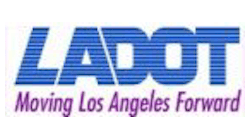L.A. Metro’s bus lane enforcement program begins ticketing violators
In partnership with the Los Angeles Department of Transportation (LADOT), the Los Angeles County Metropolitan Transportation Authority’s (L.A. Metro) bus lane enforcement program has begun ticketing violators.
Originally announced Nov. 1, 2024, the bus lane enforcement pilot program is rolling out on major corridors where bus lanes have been established to prioritize public transit in areas with high bus ridership and traffic congestion, including bus lines 720 servicing Wilshire Boulevard and 212 servicing LA Brea Avenue.
During the initial 60-day period of phase one of the program (December – January), motorists illegally parked in bus lanes on those lines received notices by mail warning that future violations would be subject to fines. Effective Feb. 17, L.A. Metro says violators will face a penalty starting at $293 for illegally parking in designated bus lanes, helping to ensure buses can travel without obstruction and reduce delays for passengers.
“Without enforcement, a single parked car in a bus lane can delay dozens or even hundreds of riders, so, this is not just about issuing tickets, it’s about making sure our [L.A.] Metro buses run on schedule and get our riders to their destinations on time,” said L.A. Metro Board Chair and LA County Supervisor Janice Hahn.
L.A. Metro says the initiative is part of its ongoing efforts to improve safety and ensure equitable access, as well as enhancing the reliability and speed of bus services, particularly along high-traffic corridors where bus lanes are critical to keeping buses on time. The agency notes blocking bus lanes has a disproportionate impact on bus riders, resulting in delays and disruptions. One vehicle can have an outsized burden on the dozens of riders on each bus, resulting in missed transfers and late arrivals. In addition, for those passengers with mobility challenges, it impacts their ability to easily enter or exit the bus.
“Every [L.A.] Metro bus carries someone’s mother, grandfather or child, all of whom are trying to get to their destination, so they can spend time with those most important to them,” said L.A. Metro CEO Stephanie Wiggins. “Our bus riders deserve to have a reliable, safe and on-time ride. That’s why we’ve partnered with LADOT to install bus lanes on Wilshire Boulevard and La Brea Boulevard to give all our riders a better, faster and more consistent ride. However, since they’ve been installed, service is delayed due to vehicles blocking the lanes, and that’s why we’re pleased that enforcement is going to begin to prevent misuse of the bus lanes.”
According to L.A. Metro, the automated enforcement system captures violations through two cameras installed behind the windshields of select buses each serving a different function. One camera uses computer vision to detect vehicles on the roadway and traffic lane lines. When a bus lane violation is detected, the second camera records the license plate of the violating vehicle. Then, a traffic officer with LADOT will review the evidence and verify the accuracy of the image before issuing a ticket. Tickets will include details of the violation, including time, location and images or video evidence.
“Every day, thousands of Angelenos depend on public transit to get to their jobs, schools, healthcare and other critical destinations,” said LADOT General Manager Laura Rubio-Cornejo. “This new program will help the city realize the service reliability and efficiency benefits of its dedicated bus lanes, as we continue to partner with [L.A.] Metro to improve bus service across our transportation system.”
L.A. Metro says as part of phase two of the program, 50 cameras are being installed on select buses on bus lines 910 and 950 that serve the J line and line 70 servicing Olive Street/Grand Avenue for a total of 100 vehicles supporting the bus lane enforcement program. The agency notes the 60-day warning period for those areas will begin on March 3.
The automated bus lane enforcement technology advances L.A. Metro’s NextGen Bus Plan by ensuring the agency’s riders experience the benefits of new bus lanes and improve safety and transit reliability.






